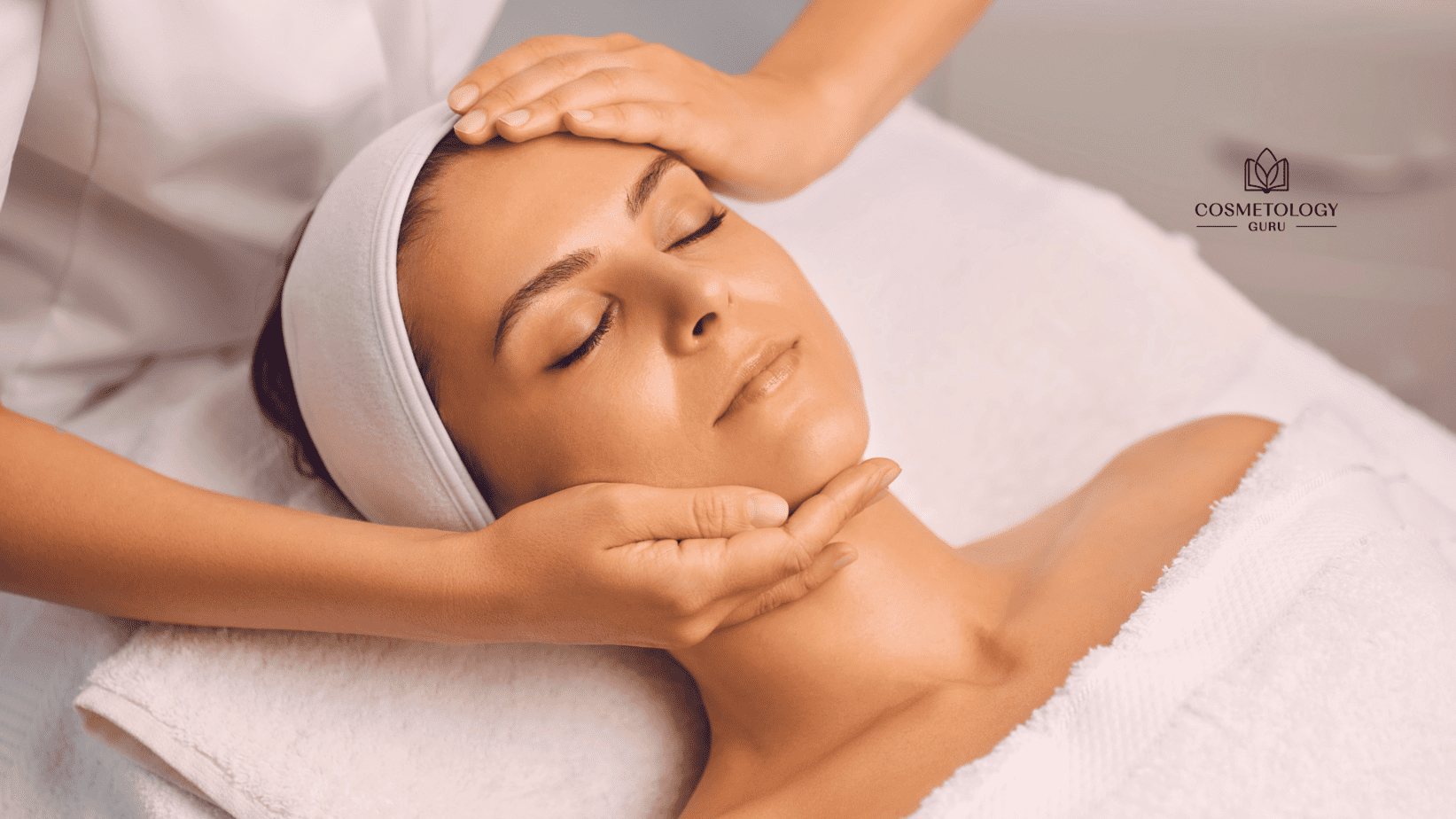When most people think of estheticians, they picture relaxing lavender aromatherapy and gentle facials. Pampering might be sufficient for some, but other people need a little more help to get certain skin conditions. And that’s where a medical esthetician comes in!
A medical esthetician is a licensed esthetician who works in a medical setting alongside healthcare professionals. They work with doctors on clients with more severe and complex skincare conditions.
What is a medical esthetician?
Before we dive into what a medical esthetician is, we need to talk about using the term “medical.” Not only does that term intimidate those who would want to go into the field, but it can also be misleading to some people.
In fact, the NCEA (the National Coalition of Estheticians, Manufacturers/Distributors, and Associations) has stated that estheticians should market themselves only by the title appearing on their license and not promote themselves in any other way.
Why does that matter? Because there is technically no such thing as a “medical esthetician.” At least not currently, and there are no state-recognized licenses that would be titled as such. A medical esthetician is licensed the same as a regular esthetician.
The reason some, like the NCEA, think the title is misleading is that the esthetician isn’t required to have any formal medical training or knowledge other than what is taught in a standard beauty school esthetics program.
Why are they called that?
You might be wondering, then, why have the term “medical” in the name at all? It’s because it delineates where the esthetician practices – namely in medical settings.
Medical estheticians work alongside and in conjunction with healthcare professionals in medical facilities (like hospitals or clinics).
They work with patients who have complex skin conditions that require professional medical help – like dermatologists or primary care providers.
Medical estheticians work closely with the patients and the doctors to help establish and carry out a strong treatment plan for whatever the skincare issue may be!
What’s the difference between an esthetician and a medical esthetician?
Though they are licensed, a medical esthetician’s work is significantly different from an esthetician practicing in a more “normal” setting.
Both estheticians and medical estheticians are trained and licensed skin care professionals. Their scope of practice even covers the same things: namely, facials, peels, hair removal, etc. The main difference, then, is where they work and on whom.
Medical Estheticians

As we’ve already described, medical estheticians work in medical settings. These can include hospitals, dermatology clinics, cosmetic surgery clinics, and medical spas.
A medical spa is a spa that operates under the supervision of a licensed healthcare professional. Treatments at medical spas go beyond those allowed at a traditional salon, such as brown spots, redness, and broken capillaries.
Another difference between regular and medical estheticians is the reason they perform the procedures. Medical estheticians are frequently working with people who are recovering from surgery, illness, or severe/complex skin conditions.
Skin conditions you’re likely to work closely with in this setting would include:
- severe acne and acne scarring
- psoriasis
- eczema
- skin cancer
- rosacea
- shingles
- warts
Although it is by no means a requirement for the job, many medical estheticians do have a background in the medical field, such as being registered nurses. At the very least, they tend to have an interest in the medical field.
In addition, medical estheticians also opt to complete further training in specialized areas, like becoming certified laser technicians or electrologists. This is because many healthcare clinics need professionals who can perform such procedures, which gives the esthetician more job opportunities.
It’s also important to note that medical estheticians differ from paramedical estheticians, even though they are similar and commonly mistaken as the same thing.
Spa Estheticians

A regular esthetician – or “spa” esthetician – generally works in a spa or salon setting. The duties they perform will commonly have more of a focus on relaxation and aromatherapy, as well as recommending and selling skincare products.
The clients of spa estheticians generally come in for the purpose of maintaining a skincare regimen. Their clients are also more likely to come in with less severe problems, as those with more complicated skincare issues should be referred to a healthcare professional.
State Regulations
It’s important to remember, though, that both medical and spa estheticians are subject to the exact same state regulations.
For example, some states, like California, only allow estheticians to perform light chemical peels, while moderate and deep peels are reserved for medical professionals only.
That rule applies to both types of estheticians, regardless of which setting they practice in. The same also goes for treatments that require extra training and certifications.
For example, in Florida, you need to complete a program to become a certified laser hair removal technician. In Colorado, you must complete a course and obtain a certificate before you can legally perform dermaplaning procedures.
If you’re ever unsure about what things you can and can’t do as a cosmetologist or an esthetician, you can always call your state board, and they’ll be more than willing to answer all of your questions!
Medical esthetician job description
As an esthetician working in a hospital or healthcare clinic, your duties might include:
- Administrative work: such as securing consent and signed release forms, making appointments, and obtaining new lists of skin conditions, medications and past procedures.
- Maintenance work: such as keeping workstations up to OSHA standards, as well as performing equipment maintenance.
- Educating: informing clients of proper at-home techniques, pre-and post-operative skincare, and general skin care necessities.
- Hands-on work: actually performing facials, chemical peels, makeup application, etc. on their clients.
Differences in the workplace
The duties commonly performed by a medical esthetician will generally depend upon the specific place they work.
For example, in a general healthcare clinic setting, a patient may come in with severe scarring after a bad accident or injury. Part of your job as an esthetician would be to teach the patient proper makeup application techniques to help conceal the scarring, as well as how to care for healing skin.
You might also provide skincare product recommendations or work closely with their doctor to relay their concerns and develop the best treatment plan. You might also start the patient on a new skincare regimen to help improve the appearance of the scarring over time.
However, if you worked at a cosmetic surgery clinic, you might encounter a patient who has major bruising and swelling after a plastic surgery procedure.
Your job would then be to help the client by teaching them how to reduce the swelling and discoloration until it has fully healed. You would also instruct them on how to care for and clean their skin while it is sensitive and still healing.
Overall, though, your duties will include working closely with a doctor and their patient to help provide the best course of action with regard to their specific skin care needs.
This video shows medical esthetician Tonya explaining her duties during a typical day working in a plastic surgeon’s office:

How much does a medical esthetician make a year?
Overall, estheticians, or skincare professionals, have an average income of $38,060 as of 2021, according to the Bureau of Labor Statistics.
Rural and less populated areas, however, tend to make significantly less and fall lower on the scale. Urban areas, on the contrary, can pay significantly more depending on which metropolitan area you live in.
Overall, though, being a medical esthetician can provide a strong, steady income and is worth the investment of time and money in schooling!
How do you become a medical esthetician?
Becoming a licensed medical esthetician is the same process as becoming a licensed esthetician, as there is no technical difference in the schooling required or the licenses you will receive.
To begin training to be a medical esthetician, in most states you must have graduated high school or have obtained your GED. Then, you must find and enroll in a state approved cosmetology or esthetics program.
It’s important to remember when choosing your course that both a cosmetology program and an esthetics program will allow you to be an esthetician. Some states will even allow you to choose an apprenticeship instead of going to beauty school!
It’s also important to remember that schooling requirements vary by state, so it’s important to double check and make sure you’ll be fulfilling all your state’s requirements.
After completing your schooling, you’ll be eligible to take the state board exam for either esthetics or cosmetology. And, if you pass, you’ll officially be licensed and allowed to practice in any work setting – including a medical one!
Almost ready for your state board exam? Take our free esthetician practice test to see if you’ll pass!
Some people, especially those looking to work with healthcare professionals, look into furthering their studies by completing additional training programs that allow them to do things like dermaplaning, laser hair removal, etc.
Having extra training and qualifications will open more doors for you when you’re ready to start applying for jobs, and can help you better your chances at getting hired!
Related Reads
6 Types Of Esthetician Specialist In The U.S.: A Comprehensive Guide
Top 5 Highest Paying Esthetician Jobs In 2022
How To Become A Paramedical Esthetician
Whether you’re perfecting your craft in hair, makeup, or skincare, safeguarding your practice against unforeseen events is crucial for peace of mind—find out your options.


